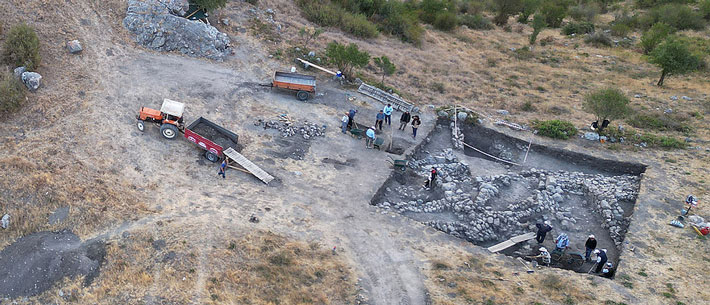 WÜRZBURG, GERMANY—According to a statement released by the University of Würzburg (JMU), a cuneiform tablet bearing a reference to a previously unknown language was uncovered in north-central Turkey at the site of Boğazköy-Hattusha, the capital of the Hittite Empire between 1650 and 1200 B.C. More than 30,000 clay tablets have been recovered from the ancient city over the past 100 years. Most of the texts on these tablets were written in Hittite, but passages written in Luwian, Palaic, and Hattic have also been identified. “The Hittites were uniquely interested in recording rituals in foreign languages,” explained JMU researcher Daniel Schwemer. This tablet bears a Hittite ritual text that refers to the language of the land of Kalašma, an area near the northwestern edge of the Hittite territory. The language of Kalašma has not been deciphered, but Elisabeth Rieken of Marburg University has confirmed that it belongs to the family of Anatolian-Indo-European languages. To read about the antecedent of Indo-European languages, go to "Telling Tales in Proto-Indo-European."
WÜRZBURG, GERMANY—According to a statement released by the University of Würzburg (JMU), a cuneiform tablet bearing a reference to a previously unknown language was uncovered in north-central Turkey at the site of Boğazköy-Hattusha, the capital of the Hittite Empire between 1650 and 1200 B.C. More than 30,000 clay tablets have been recovered from the ancient city over the past 100 years. Most of the texts on these tablets were written in Hittite, but passages written in Luwian, Palaic, and Hattic have also been identified. “The Hittites were uniquely interested in recording rituals in foreign languages,” explained JMU researcher Daniel Schwemer. This tablet bears a Hittite ritual text that refers to the language of the land of Kalašma, an area near the northwestern edge of the Hittite territory. The language of Kalašma has not been deciphered, but Elisabeth Rieken of Marburg University has confirmed that it belongs to the family of Anatolian-Indo-European languages. To read about the antecedent of Indo-European languages, go to "Telling Tales in Proto-Indo-European."
New Language Identified at Turkey’s Hittite Capital
